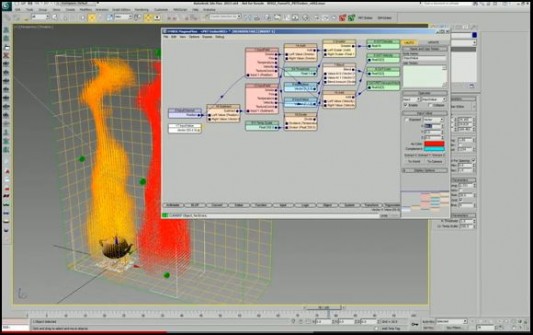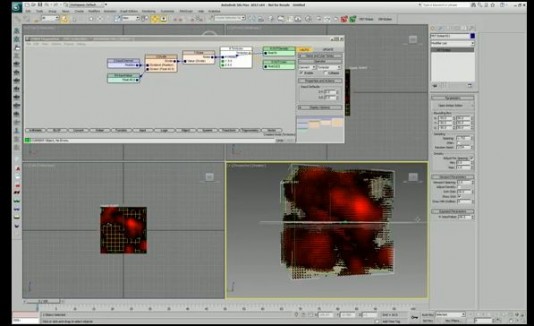Ember can edit voxel grids, fields, and point clouds from the inside out.
Thinkbox Software will preview a new kind of 3D editor for digital content next week at Siggraph. Ember is a volumetric data manipulation toolkit, capable of editing fluid motion elements such as flame or water, as well as other digital content created by fields, voxel grids, and point clouds.

Ember is currently being developed as a plug-in for Autodesk 3ds Max, and is planned as a standalone tool in the future. An early version of Ember will be demonstrated at the SIGGRAPH Conference, August 5-9 in Los Angeles at booth #937.
Thinkbox says Ember will integrate with several third-party simulation packages including FumeFX, Phoenix FD, RealFlow and Naiad, in addition to Thinkbox’s own suite of VFX tools. Ember will allow the user to combine volumetric data in creative ways, allowing for post-simulation reprocessing that offers higher artistic control over the final results and reduces the production time by reusing and repurposing simulation data assets.
Ember key features include:
- Scalar and vector fields creation from mathematical functions, texture maps, geometry level sets, particle systems and point clouds data;
- Volumetric data input and output to/from various sources, including FumeFX and FXD files, Field3D files, Thinkbox PRT, RealFlow BIN and CSV files;
- History-independent and history-dependent field processing, discretized or grid-less advection of fields and particles using various solvers;
- Node-based workflow shared with other products like Krakatoa and Genome, including dedicated modular operators for caching on various grids, performing gradient, curl and divergence calculations, and more.
Thinkbox will start beta-testing Ember in the second half of August. A beta application and related survey can be found online at http://www.thinkboxsoftware.com/news/2012/7/16/sign-up-for-the-ember-beta.html

Power to the post-processors
The ability to edit billowing clouds, explosive flames, rushing waves and other volumetric data will not only be useful in the digital content creative process but will likely open the door to new workflows, such as re-using elaborate simulations. VFX artists will undoubtedly find new ways to add the synthesis and editing of volumetric and simulation data into their workflows. ?





